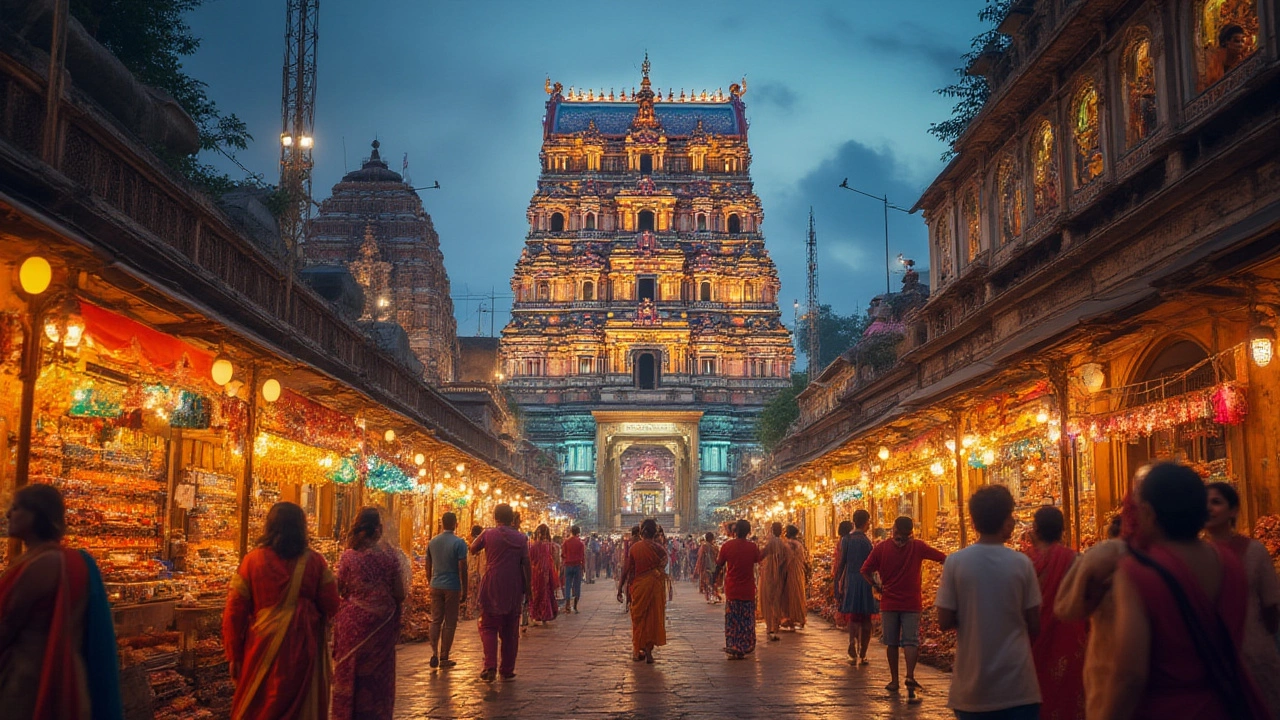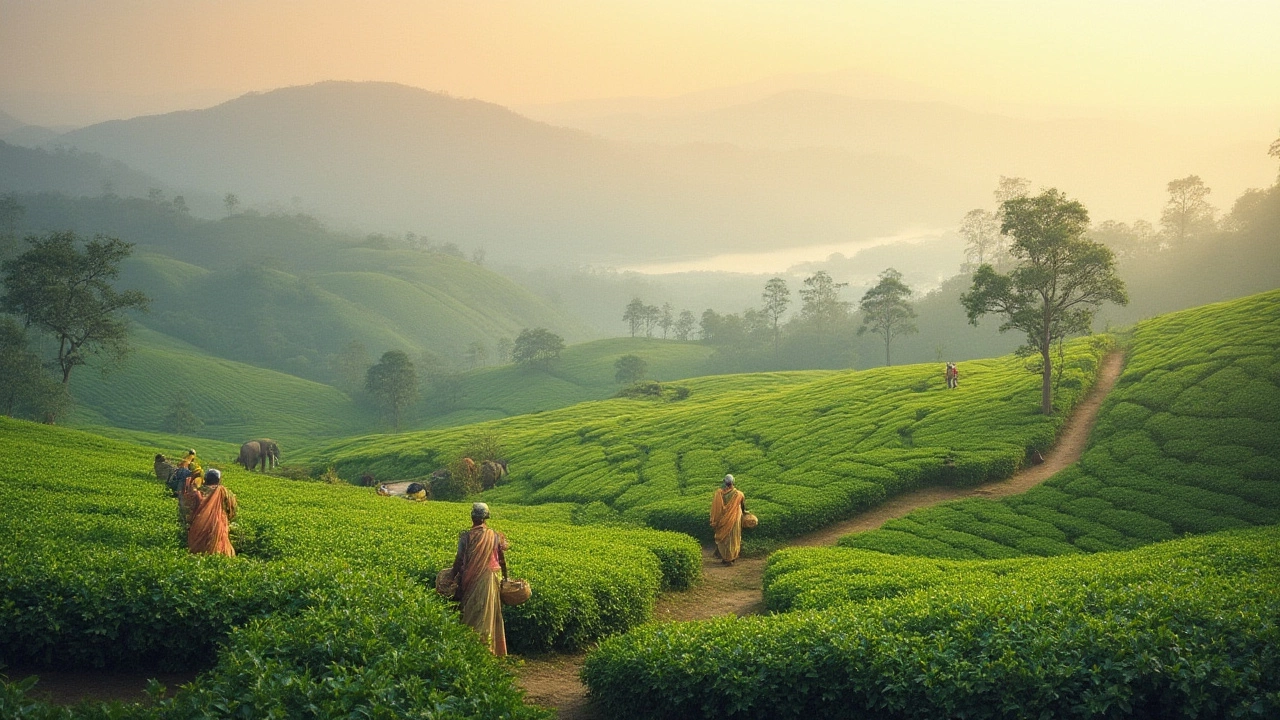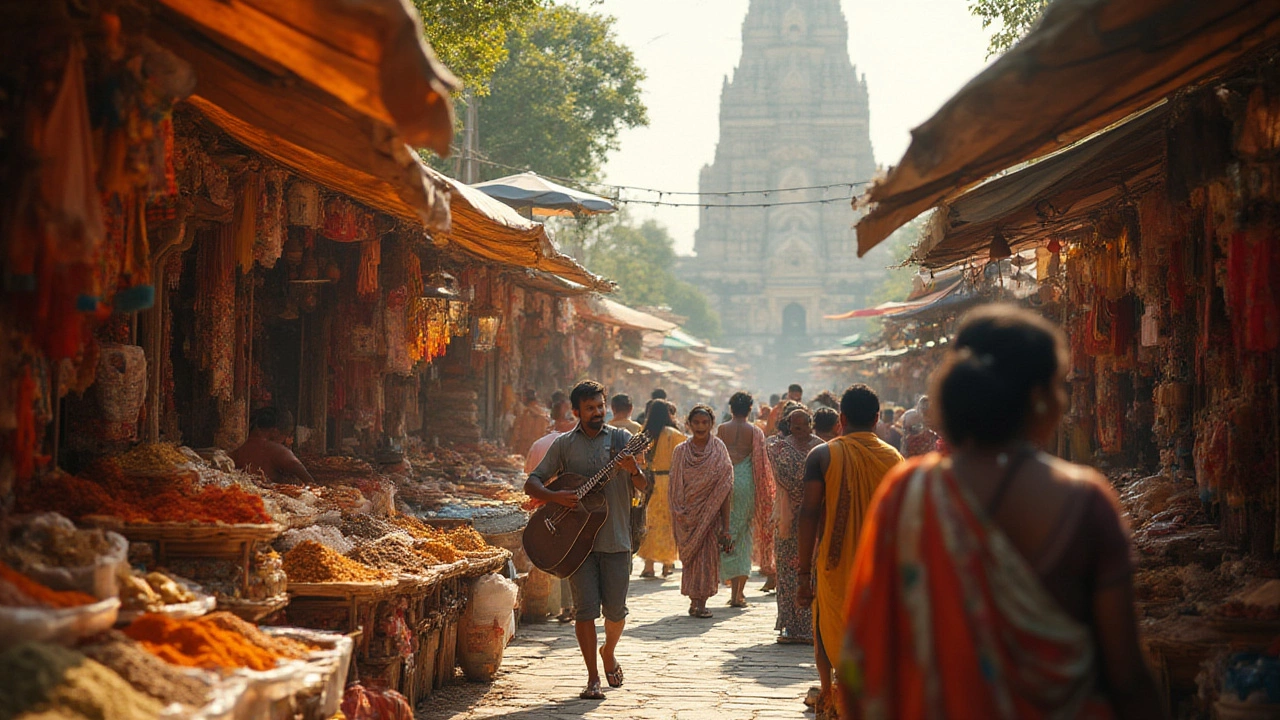Best Tourist Attractions in South India: Discover the Ultimate Destination
 Jul, 17 2025
Jul, 17 2025
Ask anyone who’s spent time traveling across India, and you’ll get a dozen different answers about which corner is the best. But in South India, there’s a destination that stands head and shoulders above the rest—Mysuru, the city of palaces and the cultural heartbeat of Karnataka. It gets over 3.5 million visitors every year, not just for its royal heritage but its unique blend of history, charm, and atmosphere. So, why does Mysuru keep topping the tourist charts? Some say it’s the spellbinding Dasara Festival lights, others rave about the buttery-sweet mysore pak, and many just can’t get enough of the palace that looks like it stepped out of a fairy tale. Whatever brings you here, Mysuru’s got something that cities twice its size can only dream of.
What Makes Mysuru the Crown Jewel of South India
Mysuru, often called the ‘City of Palaces’, doesn’t just dazzle with its famous palace—though, let’s be honest, the South India tourism buzz around Mysore Palace is justified. This sprawling Indo-Saracenic marvel lights up every Sunday evening with nearly 100,000 bulbs, bathing the city in an amber glow. Grab a local’s tip: the best view is from the gardens just before sunset, when the palace glows gold and selfies actually look magical. The palace interiors are open to tourists, decked out with stained glass, Belgian mirrors, and enough intricate carvings to make your camera work overtime.
But if you think it’s just about the palace, think again. Chamundi Hill looms over the city, and climbing its 1,008 steps has sort of become a rite of passage for locals and travelers alike. It’s a test of stamina, sure, but reaching the top rewards you with panoramic views over Mysuru’s tiled rooftops and green stretches. Don’t skip the thousand-year-old Chamundeshwari Temple—locals swear leaving even a single rupee brings back luck. Looking for quieter charms? Stroll down the tree-lined avenues and pause at the famous Devaraja Market. The blast of colors and smells—pyramids of marigolds, mounds of cardamom and fresh sandalwood—will knock you sideways.
The city’s backbone, though, is its culture. Mysuru was once the cultural capital of the British Raj, and its love affair with art, dance, and music still pulses through the festivals and daily life. Dasara is the show-stopper. For ten days every autumn, elephants strut down the streets in golden armor, musicians belt out old classical ragas, and fireworks light up the skyline. Hotels get booked out months in advance for a reason—this is South India’s Mardi Gras, minus the beads. Beyond Dasara, you’ll find yoga schools celebrated globally, and you can try your hand (and flexibility) at Ashtanga yoga in one of the many world-class studios. Casual tourist tip? Get up at dawn to join a yoga class in the open air at Kukkarahalli Lake before that famous Mysore filter coffee kicks in.
Food here is more than a meal—it’s an event. Every thali overflows with dosas, sambhar, delicate sweets, and signature spicy curries. Try the real-deal mysore masala dosa at Mylari: it’s crispy on the outside, shockingly soft, and served with a heap of coconut chutney. And, yes, there’s an army of cafes offering everything from cinnamon rolls to mango lassis if you need a break from spice.
Check the stats, and it’s clear Mysuru leads the way for South Indian tourism:
| Attraction | Annual Visitors | Best Time to Visit | Insider Tip |
|---|---|---|---|
| Mysore Palace | 2.5 million | September-October (Dasara) | Visit at 7 PM for illumination |
| Chamundi Hill | 1.2 million | Early mornings, year-round | Climb before sunrise for cool weather |
| Devaraja Market | 800,000 | Year-round | Go early for fresh flowers and fewer crowds |
| Karanji & Kukkarahalli Lakes | 400,000 | November-February | Great for birdwatching at sunrise |
So yes, historical charm is part of the draw, but the beating heart of Mysuru is seen in small, real moments—in a chai stall chat, a glowing lamp-lit festival, or a lazy evening stroll through Brindavan Gardens while the musical fountains dance to Bollywood hits. Between its grandeur and warmth, you’ll get why seasoned travelers pick Mysuru time after time.

Essential Experiences and Hidden Highlights in Mysuru
Most itineraries start with the famous, but true travel is about digging beneath the surface. Mysuru’s got its well-known gems, but scratch just a little and the city opens up in new ways. Ever tried sandalwood oil extraction with your own hands? At the Government Sandalwood Oil Factory, you can see how this city’s other claim to fame—sandalwood crafts—are painstakingly made. These tiny bottles fly off shelves for good reason, so grab one before leaving town. For wildlife buffs, the Mysore Zoo (Sri Chamarajendra Zoological Gardens) is one of the oldest in India, established way back in 1892. With over 160 species and some of the largest aviaries you’ll find, it’s a magnet for families and nature fans alike.
Want a break from the tourist crowds? Hop on a bicycle and explore Srirangapatna, less than 20 km from Mysuru. Here, faded colonial churches, Mughal-style tombs, and the famous Ranganathaswamy Temple tell stories of conquests and kings. Kayak on the tranquil Kaveri River, or spend a night at riverside guesthouses—the sunsets are the real draw. Mysuru’s night markets, especially during Dasara, are buzzing with life. You’ll see vendors selling hand-painted puppets, silk saris you’d actually want to wear, and the unmistakable aroma of street food in the air. Don’t leave without sampling Mysore bonda and vada with a punchy tomato chutney—it’s comfort food at its best.
Art lovers, this is your playground. The Jaganmohan Palace, now an art gallery, houses more than 2,000 paintings—everything from Raja Ravi Varma’s classics to delicate Mysore-style miniatures painted in gold leaf. Want to try your own hand? Many local artists offer workshops in traditional Mysore painting, so you can take home more than just a refrigerator magnet. Take an hour to visit the Railway Museum, too—it’s one of few in India, with old steam engines and quirky rail memorabilia that’s oddly satisfying if you love vintage things.
For those who can’t sit still, the city’s surroundings open up a world of adventure. Trekking on the Nilgiri foothills is accessible for beginners, and you might spot blackbucks and peacocks if you’re lucky. If you’re a fan of spectacular gardens, Brindavan Gardens never disappoints—just avoid weekends after dark if you hate crowds. Every evening, crowds pack the main terrace for the music-and-lights fountain show, a tradition since the 1930s. Pack a picnic and join the fun; it’s a local favorite for good reason.
Little-known fact: Mysuru is one of the cleanest cities in India. The locals take enormous pride in their tree-shaded boulevards, spotless sidewalks, and well-kept parks like the sprawling Kukkarahalli Lake. Hit the lakeside jogging trail if you wake up early—watch out for the resident cormorants and the classic sight of elderly walkers stopping to chat under banyan trees. Caffeine lovers should visit the city’s old-school cafes (ask for Mylari’s coffee special) to soak in the retro vibe with a side of gossip from friendly regulars.
If shopping is your weakness, Mysuru’s silk market is the answer. This is the city that practically invented the Mysore silk sari—each one is woven with gold threads and sold in brightly lit shops all across town. Bargaining isn’t usual, but look for government-certified stores for genuine pieces. Another shopping tip? Don’t miss sandalwood carvings, incense, and rosewood inlay boxes for gifts that scream ‘Mysuru’ without being cheesy tourist traps.
There’s no shortage of places to sleep, either. From stately heritage stays right inside old palaces to tiny, family-run inns where breakfast is masala dosa made to order, there’s something for every budget. For the seasoned traveler or the newbie, Mysuru is more than a checklist—it’s an experience that seeps into your bones and makes you want to stick around just a little longer each day.

Planning Your Trip: Tips, Data, and How to Avoid Tourist Traps
If you’re charting a course for Mysuru, timing is everything. The city’s climate is friendlier than most of South India—no suffocating heat, with winters (October to February) pulling in cool, breezy days ideal for sightseeing. Monsoon (June-September) paints the gardens lush green, though the palace’s golden glow is best seen during Dasara, usually in September or October. Book your accommodation months ahead if you’re aiming for Dasara; last-minute rooms double in price and fill up fast.
When it comes to getting around, Mysuru is easygoing. The local bus system links all the hotspots, but nothing beats an auto-rickshaw for weaving through traffic, catching snippets of conversation, and feeling the city’s pulse. For a more relaxed pace, rent a bicycle or join one of the city’s free walking tours—many designed by college students who know secret stories behind every alley. If you’re coming from Bengaluru, the new express train service zips you into Mysuru in under 2.5 hours, with panoramic views of sugarcane fields and hills as you go.
Money matters? Everything is wallet-friendly, especially outside festival time. Street food rarely costs more than INR 100, and a full-course thali lunch hovers around INR 250. Even premium hotels here are a steal compared to bigger Indian cities, rarely crossing INR 6000 per night for top-notch heritage comfort. For souvenirs, check official outlets like the Cauvery Arts Emporium for honest prices.
Tourist traps exist here too, like pushy guides outside the palace. Best way to dodge them? Book a regular palace ticket inside, or join a group tour hosted by certified local guides. If you want a slice of local life, join the daily morning yoga class at Lingabudi Lake or drop by during Friday’s flower bazaar at Devaraja Market, where vendors weave garlands the old-fashioned way. Always carry some cash—the city is modern, but small stalls and tuk-tuks may not accept cards.
Safety is one of Mysuru’s surprising strengths. It’s ranked among India’s safest cities for travelers, so solo explorers can comfortably stroll and soak up the atmosphere, even in the evenings. Use standard precautions: keep valuables close, stick to lit areas after dark, and trust your gut on deals that seem too good to be true. English and Kannada are widely spoken, and you’ll be surprised by how eager locals are to share tips, directions, and sometimes, their lunch.
If you’re obsessed with data and rankings, this table sums up why Mysuru is always top of the charts among South Indian destinations:
| Category | Mysuru | Other Top South Indian Cities |
|---|---|---|
| Cultural Sites | 11+ (palaces, museums, art galleries) | 5–8 |
| Annual Tourist Footfall | 3.5 million | 2.2–2.8 million |
| Safety Index | 8.5/10 | 6.2–7.8 |
| Seasonal Festivals | 10 major, 40+ minor | 3–6 |
| Accommodation Options | 650+ | 400–500 |
| Food Variety | 18 regional cuisines | 10–12 |
So, is Mysuru the number one tourist place in South India? Judging by its mix of royal heritage, killer cuisine, and festive buzz, it’s pretty hard to argue otherwise. Whether it’s your first trip or your tenth, this city keeps surprising you—sometimes with grandeur, sometimes with little everyday moments you couldn’t imagine anywhere else. Don’t just tick it off your list: wander, snack, chat, and let the city work its magic on you.